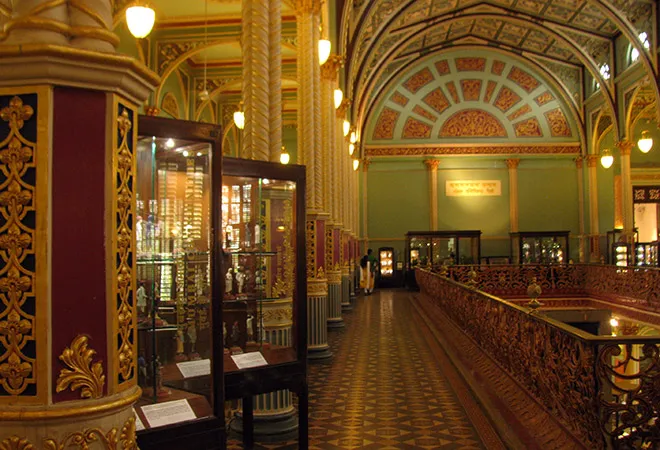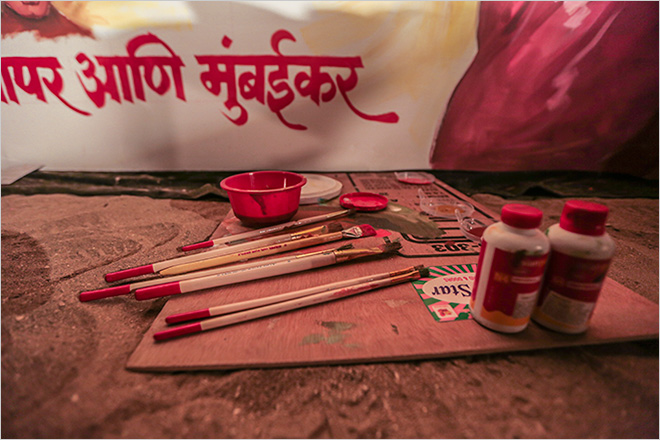
The importance of the arts in urban spaces
Smart cities are usually thought of as consisting of good high-speed internet, enabling internet of things, together with digitally enabled efficient transport, healthcare and governance systems.
However, smart cities also require art and culture. There are three broad reasons why art is of great importance to smart cities.
First, art and culture enhances the livability of a city by offering creative pursuits and entertainment to which citizens can unwind, and be inspired by. Art and culture offer ways to engage across communities and social networks.
Second, art and culture is important to attract, nurture and retain the young urban workforce that the smart city depends on. A city without a thriving art and culture scene is less likely to retain the workforce required in an increasingly digital work environment. Likewise, creativity and thinking out of the box is increasingly important for the future of jobs, as machines are likely to take over many manual tasks. Art and culture ecosystems nurture the creativity that in turn leads to innovation and creative thinking within technical jobs.
Art and culture is important to attract, nurture and retain the young urban workforce that the smart city depends on. A city without a thriving art and culture scene is less likely to retain the workforce required in an increasingly digital work environment.
Third, art and culture is important for a city’s branding as an attractive and happening place to move to or visit. It is not necessarily the case that a tourist focused art and culture initiative would be successful. Rather, a city that has a deep routed art and culture scene, is more likely to attract tourists because it is considered a fun and interesting place to be.
Given Mumbai’s focus on becoming a technology hub (ex. in fintech) as well as being the main digital cultural and creative industries hub in India, while at the same time looking to attract more tourists, it is clear that the city has much to gain from enhancing its art and culture as it moves into the digital era.
Creating a vibrant art city
The local government in Mumbai is increasingly focusing its attention on creating a thriving art scene in the city. As an example, it has recently constituted Mumbai Commission for Arts, Music and Culture. The commission, comprising of members from the city’s arts landscape, will take decisions on requests for street art including murals, sculptures and statues. The commission will put together an inventory of art installations.
Furthermore, there are plans afoot to create art spaces across Mumbai which can be used for performances and exhibitions, as well as plans for turning an old Mumbai mill, the United Mills Compound, into an art district of sorts, housing a textile museum and exhibition space.
Here, those in charge of the city have much to build on. While the southern tip of the city used to dominate the art landscape, with its many art galleries as well as the largest museum, Chhatrapati Shivaji Maharaj Vastu Sangrahalaya (CSMVS). However, arts and culture is now decentralising with clusters of activity across the city, including new galleries and performance spaces. A few years ago, the Bhau Daji Lad Museum (BDL), in central Mumbai, was restored to its full glory, and providing an important space for arts exhibitions.
Those in charge of the city have much to build on.
The yearly Mumbai Gallery Weekend brings together the galleries in the city for a yearly weekend of celebrating arts. The galleries in Colaba and Fort run a monthly Art Night Thursday, while a little further north, galleries have joined hands for the Mumbai Midtown Art Collective with a monthly Art Night Friday. Helping art enthusiasts navigate arts in the city is Carpe Arte — a platform and group organizing art walks and visits to artists’ studios.
 “Street art and art in public places has become increasingly visible in the city.” Photo: Solomon R. Guggenheim Foundation, New York — © Flickr/CC BY-NC-ND 2.0
“Street art and art in public places has become increasingly visible in the city.” Photo: Solomon R. Guggenheim Foundation, New York — © Flickr/CC BY-NC-ND 2.0
Street art and art in public places has become increasingly visible in the city. Several suburban railway stations have had a colourful makeover through the Hamara Station Hamari Shaan initiative. At Mumbai Central, Argentinian artist Pablo Ramirez created a large mural. Last year, St+Art India, a non-profit dedicated to making art public, ran a street art festival at Sassoon Dock, which include art exhibition, installations, large murals and a series of 300 photos of fishermen and women.
Looking to the future: Making Mumbai a smart art city
To build on Mumbai’s existing arts and culture and create a vibrant city that attracts workers and visitors alike, there are four areas that policy makers may consider.
First, arts and culture should be squarely included in city-level development plans, whether for the overall city, or for smaller districts. As neighbourhoods are redeveloped, the role of arts and culture should be included in specifications.
Second, policymakers should recognise the sheer diversity or arts and culture — from more traditional forms of the arts to new and emerging activities, such as new forms of music and digitised forms of arts and culture. This calls for inclusion of a range of stakeholders, and not only well-known senior arts and culture personalities. The young creative sectors require representation too.
Policymakers should recognise the sheer diversity or arts and culture — from more traditional forms of the arts to new and emerging activities, such as new forms of music and digitised forms of arts and culture.
Third, the government could provide an online port of call for information on, and application for regulations, licenses, policy and support schemes for the cultural and creative industries.
Fourth, better targeted support for organisations in the cultural and creative ecosystem would be helpful. This can include engaging with businesses to make better use of CSR provision to finance art and culture, or ensure that existing government schemes are open to relatively new forms of arts and culture, such as digital arts. In the longer term, the government may want to create a similar support to which it offers startups through its fintech hub initiative, to art and culture startups in the city. This could include better access to grants, debt and equity investments, as well as facilities such as co-working spaces or incubators with equipment for art and culture production.
The views expressed above belong to the author(s). ORF research and analyses now available on Telegram! Click here to access our curated content — blogs, longforms and interviews.




 “Street art and art in public places has become increasingly visible in the city.” Photo: Solomon R. Guggenheim Foundation, New York — © Flickr/CC BY-NC-ND 2.0
“Street art and art in public places has become increasingly visible in the city.” Photo: Solomon R. Guggenheim Foundation, New York — © Flickr/CC BY-NC-ND 2.0 PREV
PREV


